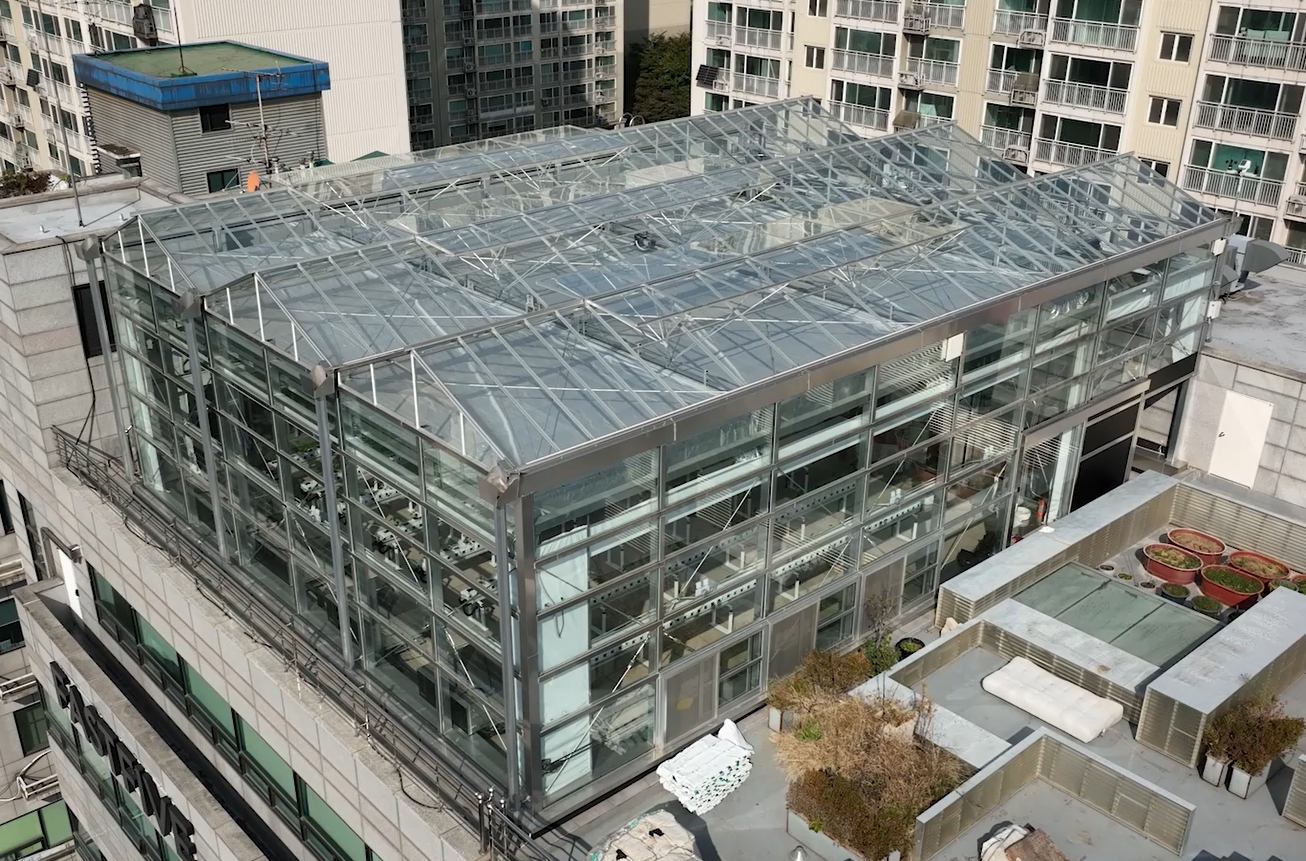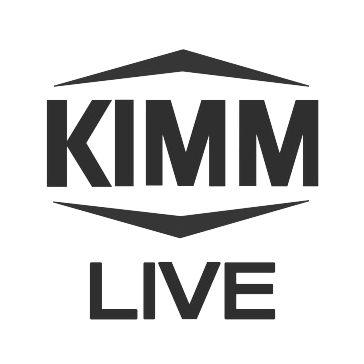
- Created2023.11.15
State-of-the-art rooftop greenhouse in downtown Seoul materializes sustainable building of the future with new energy technology
- KIMM develops the technology for “building-integrated rooftop greenhouse in the city center” for the first time in the country
- Expected to reduce energy consumption and carbon emissions by reducing the building energy required for air conditioning by 20 percent
□ A technology for saving the energy used by buildings and reducing greenhouse gas emissions by constructing a building-integrated rooftop greenhouse in the city center has been developed, and has actually been demonstrated in a building for the first time in the country. The demonstration of the rooftop greenhouse is expected to contribute not only to the realization of carbon neutrality, but also to the resolution of food shortage problems in the future by materializing sustainable urban agriculture.
□ The research team led by Principal Researcher Sang-min Lee of the Korea Institute of Machinery and Materials (President Sang-jin Park, hereinafter referred to as KIMM), an institute under the jurisdiction of the Ministry of Science and ICT, developed a world-class “active energy interchange technology*” and succeeded in demonstrating a rooftop greenhouse covering an area of 200 square meters on the rooftop of a building located in Seongsu-dong, Seongdong-gu, Seoul. It is the first time for a Korean research team to construct a building-integrated rooftop greenhouse in a commercial building.
*Active energy interchange technology refers to the technology for controlling the energy of a building as well as the greenhouse energy and proactively exchanging thermal energy and carbon dioxide.

□ Using a building-integrated rooftop greenhouse, plants can be grown by utilizing unused rooftops in cities where space is scarce. The heat and carbon dioxide discarded from the building are used for the greenhouse, and the environment within the greenhouse is controlled to maintain optimal conditions. The amount of energy used for air conditioning and the amount of greenhouse emissions can be reduced by 20 percent and 30 percent, respectively, while crop productivity can be increased by 20 percent. In addition, the reduced distance between the producing area and the consuming area can help to reduce the losses in the cold chain* that occur in the process of food transportation and storage.
*A cold chain is a system for maintaining the freshness and quality of fresh food products including agricultural products by maintaining a low-temperature range in the process of storage and transportation from the point of origin through the distribution chain to the final consumer.
□ To maximize the energy-saving effect of the rooftop greenhouse, the research team developed a “optimized smart farm operating solution” capable of controlling every aspect of the system such as air conditioning, LED, and hydroponics system in accordance with external weather conditions, and plans to demonstrate this solution through the demonstrated rooftop greenhouse.
□ For the utilization, domestic distribution, and proliferation of rooftop greenhouses, the KIMM plans to design the standards for rooftop greenhouses in new and existing buildings and develop relevant construction technologies in collaboration with such institutions as the Architecture and Urban Research Institute and the Korea Institute of Civil Engineering and Building Technology, and also to encourage the proliferation of rooftop greenhouses within the country by preparing relevant certifications and regulations. For the construction of rooftop greenhouses and demonstration of these greenhouses on buildings, the KIMM has executed a memorandum of understanding (MOU) with the Seongdong District Office.
□ Following the construction thereof, the rooftop greenhouse will be operated as a “living lab” for the residents for the purpose of realizing various social values through urban agriculture and will be used as a multi-functional space for experiencing, educating, and healing purposes.
□ Principal researcher Sang-min Lee of the KIMM’s Department of Zero-carbon Fuel and Power Generation was quoted as saying, “The technology for building-integrated rooftop greenhouse that combines machinery, energy, architecture, and agricultural technologies is a convergence technology of the future that can expand urban agriculture and help buildings to save energy.” He added, “By successfully demonstrating the country’s first model in a building in downtown Seoul, we will contribute to the proliferation of rooftop greenhouses.”
□ This research, “Development and demonstration of rooftop greenhouse-building integrated system using distributed polygeneration” was supported by the Korea Institute of Energy Technology Evaluation and Planning(KETEP) and the Ministry of Trade, Industry & Energy(MOTIE) of the Republic of Korea.
 Attachment_1_photograph_of_the_building_in_Seongsu-dong_demonstrating_a_rooftop_greenhouse_(1).jpgDownload
Attachment_1_photograph_of_the_building_in_Seongsu-dong_demonstrating_a_rooftop_greenhouse_(1).jpgDownload Attachment_1_photograph_of_the_building_in_Seongsu-dong_demonstrating_a_rooftop_greenhouse_(2).JPGDownload
Attachment_1_photograph_of_the_building_in_Seongsu-dong_demonstrating_a_rooftop_greenhouse_(2).JPGDownload Attachment_1_photograph_of_the_building_in_Seongsu-dong_demonstrating_a_rooftop_greenhouse_(3).jpgDownload
Attachment_1_photograph_of_the_building_in_Seongsu-dong_demonstrating_a_rooftop_greenhouse_(3).jpgDownload Attachment_1_photograph_of_the_building_in_Seongsu-dong_demonstrating_a_rooftop_greenhouse_(4).jpgDownload
Attachment_1_photograph_of_the_building_in_Seongsu-dong_demonstrating_a_rooftop_greenhouse_(4).jpgDownload

